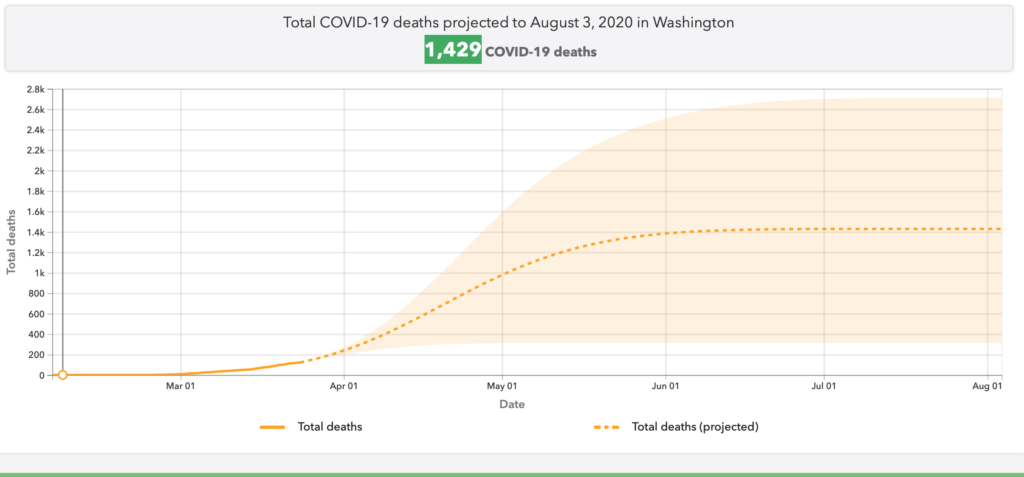
From the Institute for Health Metrics and Evaluation
SEATTLE – In a forecast based on new data analyses, researchers find demand for ventilators and beds in US hospital intensive care units (ICUs) will far exceed capacity for COVID-19 patients as early as the second week of April.
Deaths related to the current wave of COVID-19 in the US are likely to persist into July, even assuming people protect themselves and their communities by strongly adhering to social distancing measures and by taking other precautions advised by public health officials.
“Our estimated trajectory of COVID-19 deaths assumes continued and uninterrupted vigilance by the general public, hospital and health workers, and government agencies,” said Dr. Christopher Murray, Director of the Institute for Health Metrics and Evaluation (IHME) at the University of Washington’s School of Medicine. “
The trajectory of the pandemic will change – and dramatically for the worse – if people ease up on social distancing or relax with other precautions. We encourage everyone to adhere to those precautions to help save lives,” Murray said.
IHME’s analysis, based on observed death rates, estimates that over the next four months in the US, approximately 81,000 people will die from the virus. Estimates range between 38,000 and 162,000 US deaths.
The analysis was developed in response to requests from the University of Washington School of Medicine and other US hospital systems and state governments working to determine when COVID-19 would overwhelm their ability to care for patients.
The state-by-state data analysis projects demand for hospital services, including the availability of ventilators, beds, and general hospital beds.
The forecast predicts that 41 states will need more ICU beds than they currently have available and that 11 states may need to increase their ICU beds by 50% or more to meet patient needs before the current wave of the pandemic ends. (The end is defined as fewer than 10 deaths per day nationwide.)
IHME will update the analysis routinely as a source of “real-time” information for hospital system administrators and local, state, and federal health policymakers. The analysis is based on an extensive range of information and data sources, including:
- Local governments, national governments, and the World Health Organization
- Government declarations on implementation of social distancing policies
- Data from the American Hospital Association on licensed hospital bed and ICU capacity and average annual utilization of these services by state
- Data on COVID-19-related demand for ICU services in the United States
- Age-specific death rate data from China, Italy, South Korea, and the US
IHME released a paper today that includes the in-depth analysis and a description of methods. The study discusses how health systems can help address excess need by:
- Postponing elective procedures
- Increasing the number of beds above licensed capacity
- Establishing emergency field hospitals
- Reducing staff-to-patient ratios
“We hope these forecasts will help leaders of medical systems figure out innovative ways to deliver high-quality care to those who will need their services in the coming weeks,” Murray said.


